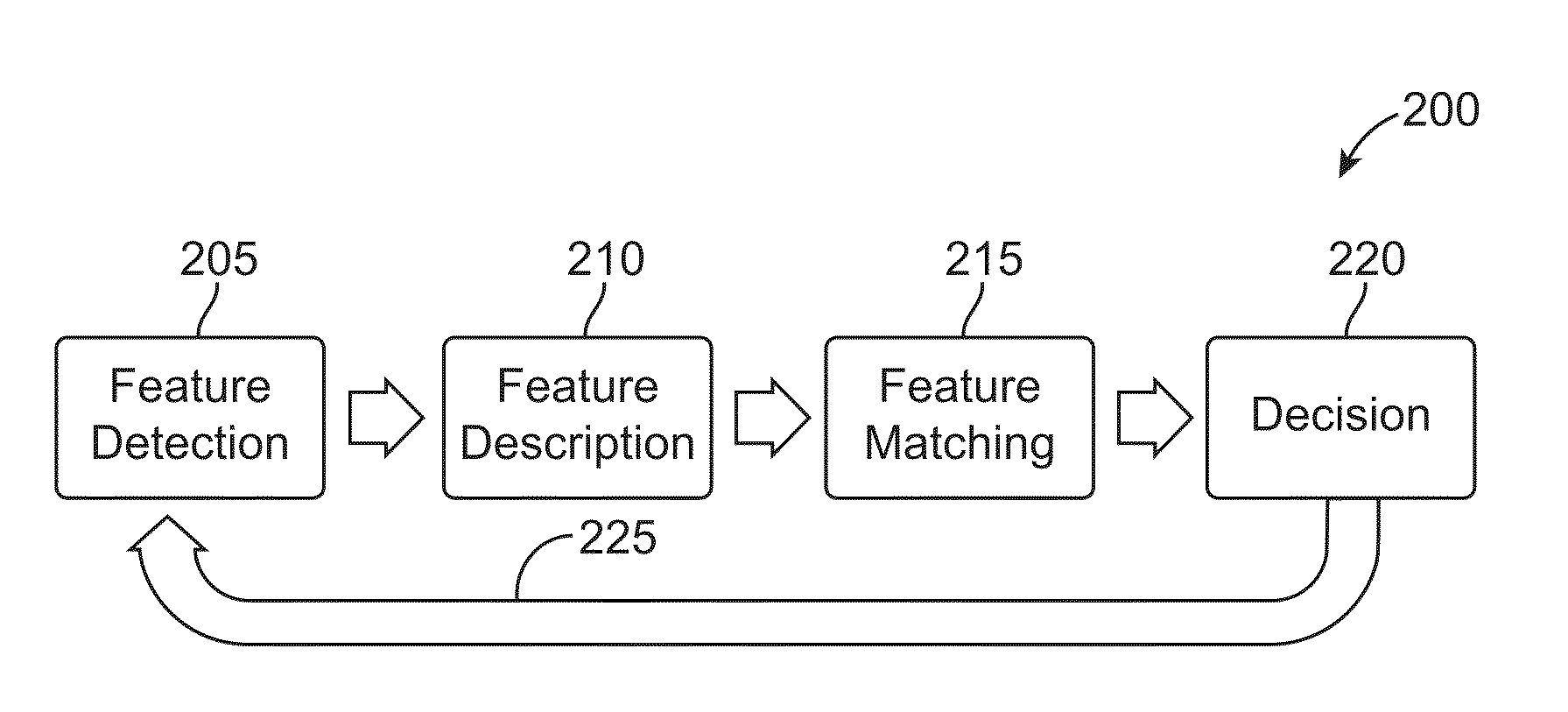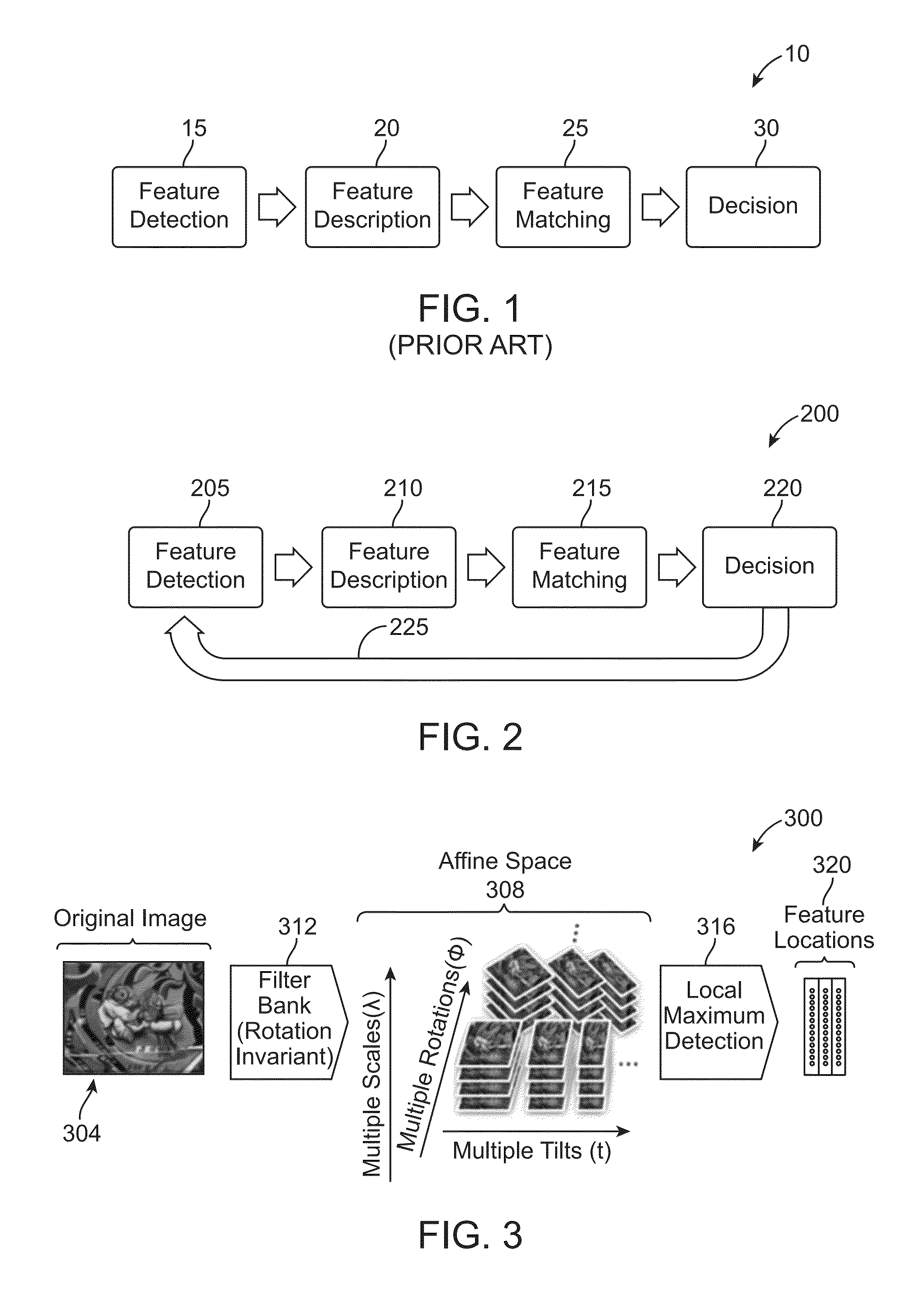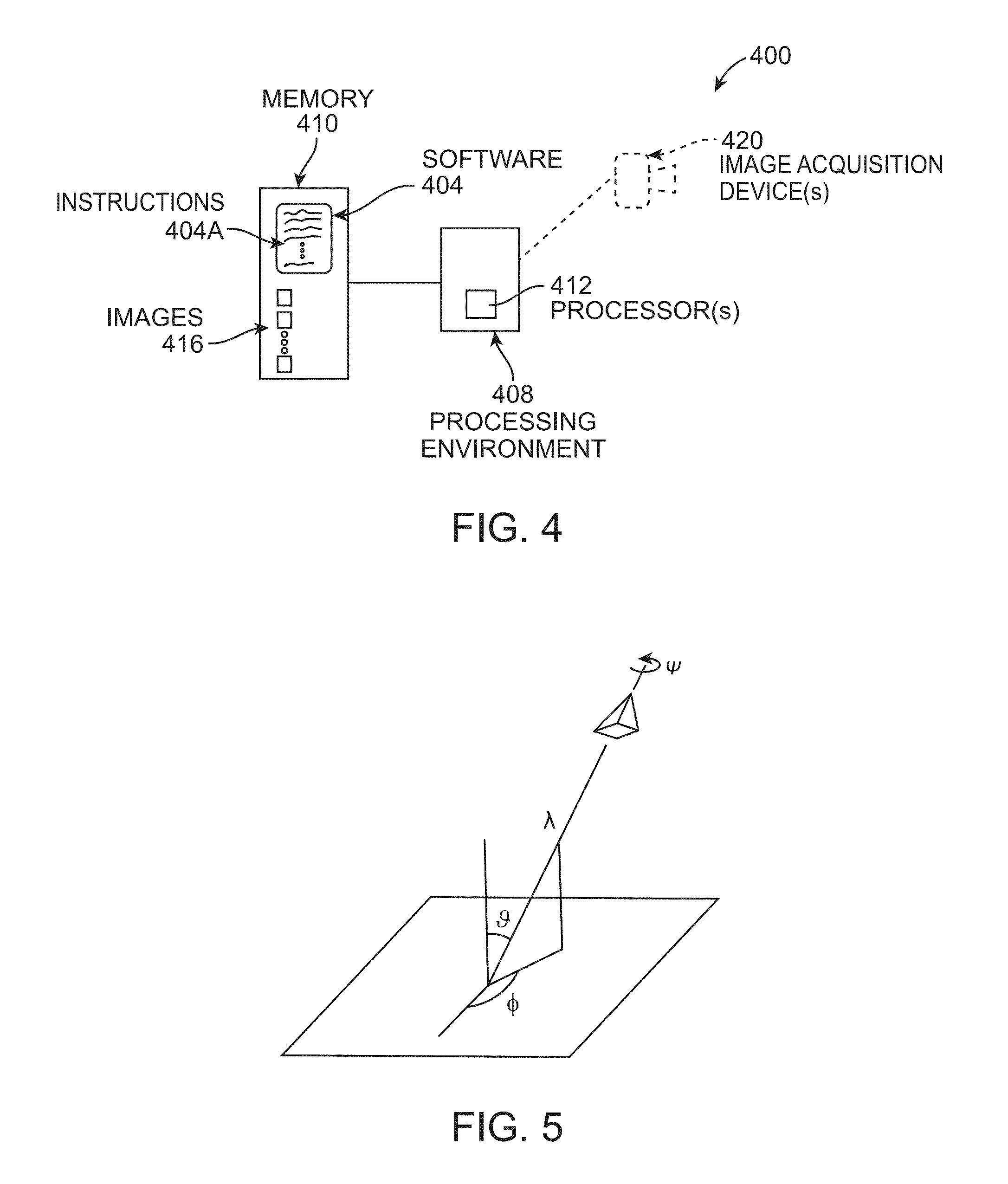Systems, Methods, and Software Implementing Affine-Invariant Feature Detection Implementing Iterative Searching of an Affine Space
a technology of feature detection and iterative search, applied in the field of computer vision, can solve the problems of insufficient robustness of algorithms to deal with full affine movement, inapplicability to commercial and other real-world applications, and inability to solve the problem of achieving the effect of increasing the sampling density
- Summary
- Abstract
- Description
- Claims
- Application Information
AI Technical Summary
Benefits of technology
Problems solved by technology
Method used
Image
Examples
example
1. Affine Invariance
[0048]As mentioned above, the iterative / batch-processing nature of methods of the present invention makes them computationally efficient, especially for complex object / scene recognition algorithms that are fully affine invariant. This section lays the groundwork for one example of an iterative affine-invariant feature detection algorithm. In section 1.1, the affine model is decomposed into four distortions that have geometric meaning: one rotation in the object plane, one rotation in the image plane, one isotropic scaling, and one tilt (or anisotropic scaling.) Section 1.2 introduces the scale-normalized Laplacian of Gaussian (LoG) filter that will be used as the basis of the exemplary feature detection scheme and shows that a filter bank consisting of LoG filters can achieve invariance to scale and rotation in the image plane. Section 1.3, details how the original LoG filter bank can be expanded to achieve invariance to the tilt parameter. Section 1.4 describes ...
PUM
 Login to View More
Login to View More Abstract
Description
Claims
Application Information
 Login to View More
Login to View More - R&D
- Intellectual Property
- Life Sciences
- Materials
- Tech Scout
- Unparalleled Data Quality
- Higher Quality Content
- 60% Fewer Hallucinations
Browse by: Latest US Patents, China's latest patents, Technical Efficacy Thesaurus, Application Domain, Technology Topic, Popular Technical Reports.
© 2025 PatSnap. All rights reserved.Legal|Privacy policy|Modern Slavery Act Transparency Statement|Sitemap|About US| Contact US: help@patsnap.com



